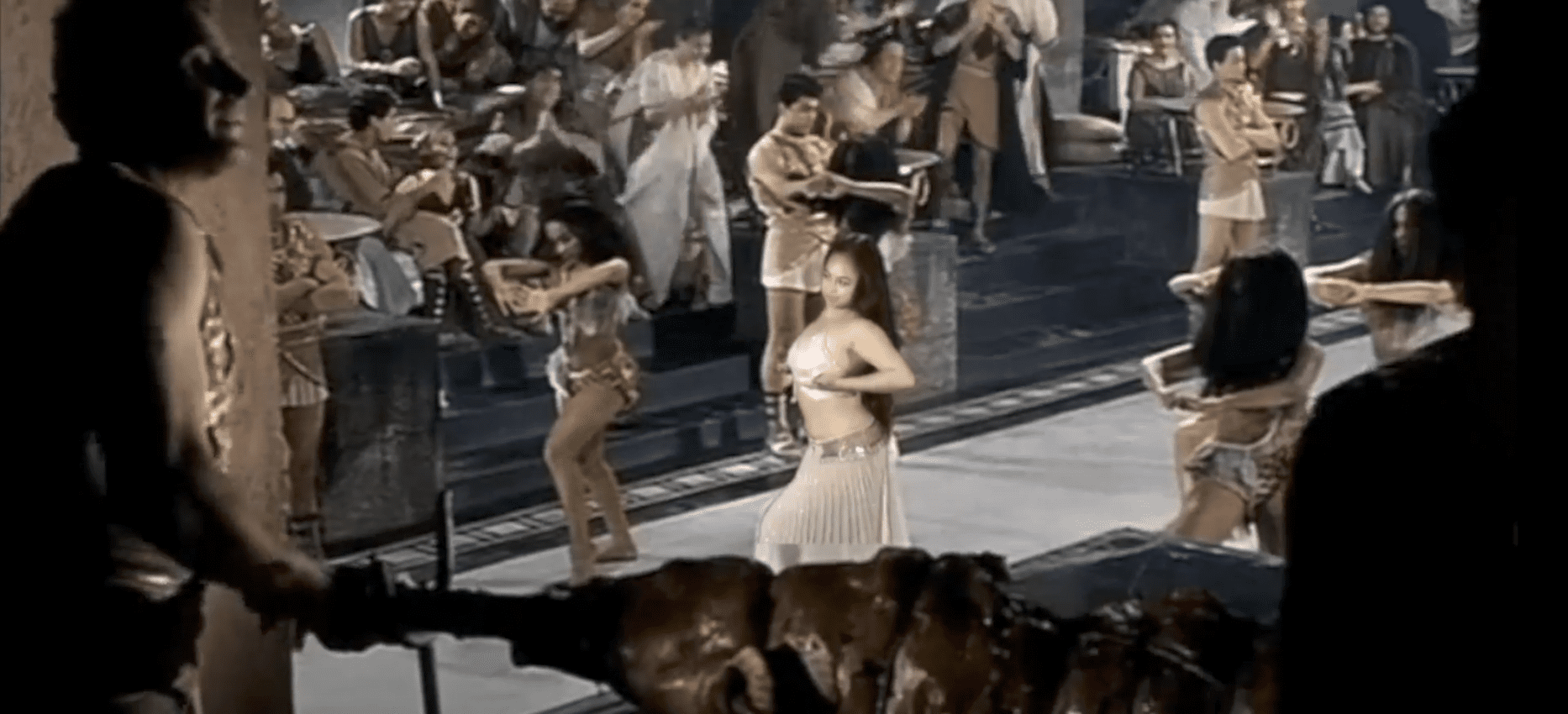Centre for
Contemporary
Photography
Current exhibition:
‘Auto-Photo: A Life in Portraits’, June 5 – Aug 16, 2025
RMIT Gallery, 344 Swanston St, Melbourne
 Caroline Garcia, Primitive Nostalgia 2016 (video still)
Caroline Garcia, Primitive Nostalgia 2016 (video still)Working and living between New York and Sydney, Caroline Garcia takes a “culturally promiscuous” approach to her interdisciplinary arts practice [1]. Her referencing of cross-cultural dance, ritual practice, popular culture, and colonial imagery in her work often results in an irreverent and joyous montage aesthetic, while at the same time critiquing major cultural forces, particularly the imperial gaze. It’s with great pleasure and pride that CCP’s Moving Images exhibition series re-presents a video work that is a key example of Garcia’s style, point-of-view, and technique — Primitive Nostalgia (2015), exhibited on-site at CCP in 2016.
Nostalgia, as it’s typically characterised, belongs to that slim, tricky group of feelings that land somewhere between pleasure and discomfort. It’s often identified as a bittersweet wash that can evoke a mix of affection, longing, sadness, and sentiment. This form of sentimental time travel, wherein one can enjoy something gone forever, is also a reminder of what has been lost or changed. When Garcia reminds us of this sentiment, it’s with a wink.
‘Imperialist nostalgia’, a term coined by Chicano anthropologist Renato Rosaldo in 1989, is not too far in name or conceptual basis from Garcia’s Primitive Nostalgia [2]. Rosaldo’s concept draws attention to the phenomenon (or technique) of nostalgic sentiment felt or expressed by imperial agents, specifically about the pre-colonial society, culture, environment, or peoples that they have colonised. The phenomenon is significantly jarring because the colonial process involves the purposeful and targeted attempt to destroy indigenous cultures — those who acted to ‘end’ cultures then also feel nostalgic about a pre-colonial condition.
However, there are further assumptions built into this philosophy that are particularly malignant, such as the implication that ‘the damage has been done’ to these cultures and peoples. This is to suggest that the culture being memorialised through nostalgia can never be ‘contemporary’, a premise Garcia laughs at with her green screen presence. While Rosaldo discussed colonial officials, missionaries, and anthropologists when first putting this idea into words, Garcia illustrates that this nostalgic colonial gaze is perpetuated through pop culture and cinema, from the 1951 film Fiesta to 2012’s Life of Pi.
Garcia is an incredible actor, costumer, and dancer — she throws herself earnestly into recreating the scenes. Garcia’s performance upholds the spectacle and entertainment of the original films, while using wry, contemporary humour to indicate the corruption of this nostalgia for the ‘exotic other’. As Garcia states in an interview about Primitive Nostalgia, “the imperfect and jarring quality of the editing process lends itself to a playfully absurd and humorous tone to parody and pastiche the source material” [3]. The scenes Garcia includes in this video work may be normalised, even to contemporary audiences, if allowed to exist on their own. However, they are revealed to be both ridiculous and sinister when we see the actors reacting to Garcia’s contemporary presence. While we as viewers know she isn’t ‘really there’, our attention is drawn to the dynamic between the people of the films (and the sentiments they represent) and Garcia, a person empowered by her authorship over the media. She throws it back in pop culture’s face — asking “Is this what you wanted? Is this who you think ‘we’ are?”. It’s this sense of authorship and power that Garcia holds that positions her to perform the aestheticised and shallow impression of the cultural ‘other’ Hollywood asks for and rewards, and at the same time draw attention to the colonial, imperialist, ’primitive’ nostalgia at play.
CCP is passionate about connecting with our communities despite physical distance, and amplifying the work of lens-based practices in Australia. During 2019’s Government enforced closure, CCP presented a series of video works online via our website and social media platforms. The series, Moving Images, will highlight new and existing artworks, from emerging and established artists. Works will vary in length, format, and subject matter, but we hope they will be unified in their ability to keep you feeling connected and inspired, and bring our communities together while we are physically apart.
Notifications